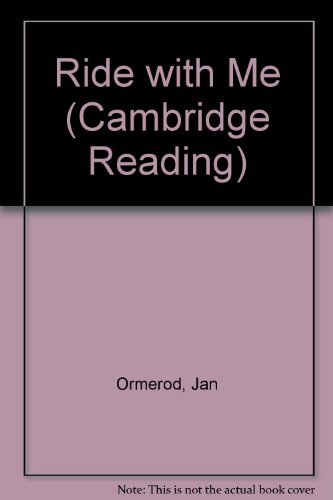-
The Watch by the Sea
Richard Brown, Annabel Large
Paperback (Cambridge University Press, Feb. 13, 1998)A major reading scheme for the teaching of reading and the development of literacy throughout the primary years. Suitable for children in Year 2 (age 6), A Watch by the Sea is from the Cambridge Reading genre strand Narrative Recounts, a strand which motivates children to explore their personal responses and make links to their own experiences. Each story in this set of nine marks a significant event from someone's childhood. Retold by Richard Brown, this story happened to Brigit Andrews when she was about eight, living by the sea in New Zealand in the 1950s. A gift from her mother, Brigit loved her first watch. It was small, gold and precious. One day Brigit took her watch off and left it on the beach whilst she went for a swim. Will Brigit remember to collect her watch before the tide comes in? Narrative recounts also provide excellent models for children's own writing. L
L
-
Coyote Girl
Rosalind Kerven, Amanda Hall
Paperback (Cambridge University Press, Oct. 28, 1996)A major reading scheme for the teaching of reading and the development of literacy throughout the primary years. Suitable for children in Year 2 (age 6), Coyote Girl is from the Cambridge Reading genre strand Stories from a Range of Cultures. This set of nine stories contain a variety of language and illustration styles, reflecting the myths, legends, folk tales and fairy stories of the many different cultures from which they were taken. Coyote Girl, written by Rosalind Kerven and illustrated by Amanda Hall, comes from the Hopi people of Arizona, USA. It tells the story of how the spiteful Yellow Corn Maiden uses a magic spell to turn the Blue Corn Maiden into a coyote. Cambridge Reading at Key Stage 1 (Years 1 and 2) offers fiction, non-fiction, poetry and plays to introduce children to a variety of text types, authors and illustrators and provide a firm base for wider reading. M
M
-
Ride with Me
Jan Ormerod
Paperback (Cambridge University Press, )None H
H
-
Cambridge Plays: Coyote Girl
Rosalind Kerven
Paperback (Cambridge University Press, Jan. 20, 2000)Cambridge Reading is a major reading scheme which provides stimulating books and support materials for the teaching of reading and the development of literacy throughout the primary years. K
K
-
An Owl at School
Claire Llewellyn
Paperback (Cambridge University Press, )None H
H
-
I Broke my Arm
Sarah Fleming
Paperback (Cambridge University Press, March 2, 2000)Cambridge Reading is a major reading scheme which provides stimulating books and support materials for the teaching of reading and the development of literacy throughout the primary years. I
I
-
Not Yet, Nathan!
Sue Perry, Jane Rose, Jan Lewis
Paperback (Cambridge University Press, Feb. 1, 1996)Cambridge Reading is a major reading scheme which provides stimulating books and support materials for the teaching of reading and the development of literacy throughout the primary years. I
I
-
The Pyjama Party
June Crebbin, Peter Kavanagh
Paperback (Cambridge University Press, Nov. 28, 1997)A major reading scheme for the teaching of reading and the development of literacy throughout the primary years. Suitable for children in Year 2 (age 6), The Pyjama Party is from the Cambridge Reading genre strand Stories with Familiar Settings, a strand where children can identify with the setting and characters and make links with their own experiences. The Pyjama Party is one of nine books written by June Crebbin and illustrated by Peter Kavanagh. Each story centres on the everyday lives of children from two neighbouring families. Young readers will easily relate to the kind of situations in which the children find themselves, and will enjoy meeting the same characters across the nine books. Cambridge Reading at Key Stage 1 (Years 1 and 2) offers fiction, non-fiction, poetry and plays to introduce children to a variety of text types, authors and illustrators and provide a firm base for wider reading. M
M
-
The Magic Porridge Pot
Cynthia Rider, Emma Shaw-Smith
Paperback (Cambridge University Press, July 5, 2001)A story-based approach to phonics practice helping children to read with confidence. A magic cooking pot sounds good, until you forget how to stop it! The Magic Porridge Pot is for children in Year 2/Primary 3 and is a Russian folktale, retold by Cynthia Rider. The highly attractive illustrations by Emma Shaw-Smith are inspired by the story's country of origin. The particular phonic focus (short oo - pull, good) is reinforced throughout the text. Each children's book includes notes on the inside back cover to support use in guided group reading sessions. L
L
-
Hello, Frog!
Tony Mitton, Marjorie van Heerden
Paperback (Cambridge University Press, )None J
J
-
My Kite Pack of 6
Tony Bradman
Paperback (Cambridge University Press, May 11, 1999)This is the 6 pack of Tea Party. Cambridge Reading is a major new reading scheme which provides stimulating books and support materials for the teaching of reading and the development of literacy throughout the primary years. I
I
-
The Clever Tortoise
Gerald Rose
Paperback (Cambridge University Press, Feb. 1, 1996)Suitable for children in Year 1 (age 5), The Clever Tortoise is from the Cambridge Reading genre strand Stories from a Range of Cultures. Children should be familiar with some of the stories in this set of nine books. The stories draw on myths, legends, folk tales and fairy stories, including Aesop's Fables, and originate from various countries including Nigeria, and South America. The Clever Tortoise is one of six stories that have been written and illustrated by Gerald Rose. They are retold in contemporary language and illustrated with simplified characters and bold colours that will appeal to young children. Cambridge Reading at Key Stage 1 (Years 1 and 2) offers fiction, non-fiction, poetry and plays to introduce children to a variety of text types, authors and illustrators and provide a firm base for wider reading. H
H